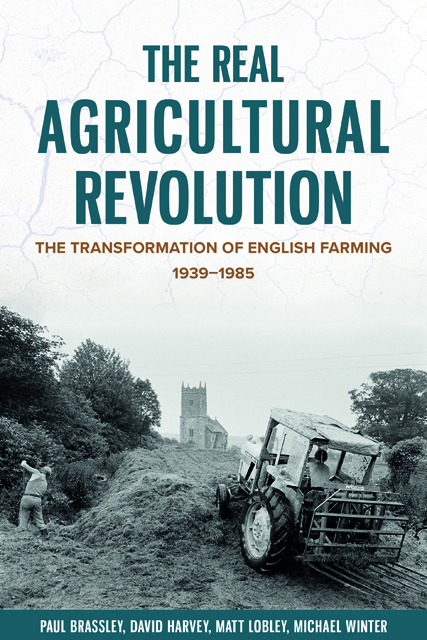Book contents
- Frontmatter
- Contents
- Figures and Tables
- Preface and Acknowledgements
- Abbreviations
- 1 Introduction: Exploring Agricultural Change
- 2 The Organisation of Agricultural Science, 1935–85
- 3 Knowledge Networks in UK Farming, 1935–85
- 4 Agricultural Policy, 1939–85
- 5 Dairy Farming
- 6 Land and Capital
- 7 Labour and Machinery
- 8 Specialisation and Expansion
- 9 The Declining Enterprises: Pigs and Poultry
- 10 Conclusions
- Bibliography
- Index
1 - Introduction: Exploring Agricultural Change
Published online by Cambridge University Press: 04 January 2024
- Frontmatter
- Contents
- Figures and Tables
- Preface and Acknowledgements
- Abbreviations
- 1 Introduction: Exploring Agricultural Change
- 2 The Organisation of Agricultural Science, 1935–85
- 3 Knowledge Networks in UK Farming, 1935–85
- 4 Agricultural Policy, 1939–85
- 5 Dairy Farming
- 6 Land and Capital
- 7 Labour and Machinery
- 8 Specialisation and Expansion
- 9 The Declining Enterprises: Pigs and Poultry
- 10 Conclusions
- Bibliography
- Index
Summary
I always found when I was young that the most obscure period of time was that which was too old to be news and too young to be history – the day before yesterday, as it were.
What If …
If, by some miracle, a farmer’s son, killed at Waterloo in 1815, at the end of the Napoleonic Wars, had been resurrected and sent to work on a small farm in September 1939, just in time for the Second World War, he would have known what to do. The horses and their harness would have been familiar to him, and the plough that they pulled, although perhaps a little lighter and stronger than those with which he had been brought up, was essentially the same. He would have known how to stack sheaves of corn on a wagon, and how to make them into a rick in the farmyard before they were thrashed. If he had no personal experience of them, he would at least have heard about seed drills and machines that thrashed out the corn, and milking the cows by hand would be a familiar task.
But if he had been resurrected in time to take part in the Falklands War, in 1982, he would have been completely baffled. Where were the horses? How were the cows milked by some strange device attached to their udders? And how could they possibly produce so much milk? Why were there no pigs or chickens or geese wandering around the farmyard? No ricks of corn waiting to be thrashed? What were those noisy, smelly, metal things that appeared to move on their own, without any horses to pull them? And where was everybody? How could those enormous cereal crops that he could see in the fields be harvested when hardly anybody appeared to work on the farm?
Agricultural Change 1939–85
The second half of the twentieth century saw almost unimaginable change in English agriculture. By the middle of the 1980s, an acre of land could produce three times as much wheat as it had fifty years earlier, and a cow twice as much milk, with only one-fifth of the workforce that had been in the industry at the beginning of the Second World War. Machinery and chemicals now did much of the work, and agriculture was now highly technical, rather than the repository of comfortable tradition.
- Type
- Chapter
- Information
- The Real Agricultural RevolutionThe Transformation of English Farming, 1939-1985, pp. 1 - 23Publisher: Boydell & BrewerPrint publication year: 2021



